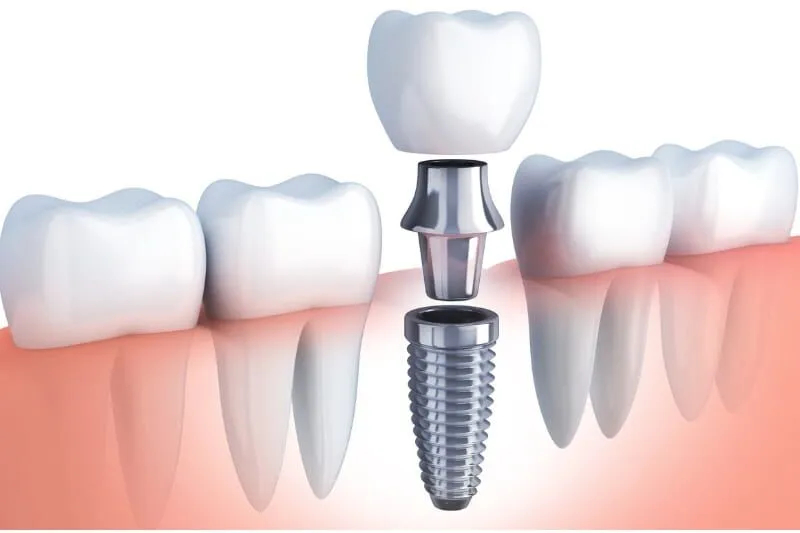
Tooth extractions are common dental procedures performed to remove damaged, decayed, or problematic teeth that cannot be saved or restored. While tooth extraction may be necessary to protect oral health and prevent further complications, it’s essential to consider options for preserving the surrounding tissues and restoring function after extraction. In this comprehensive guide, we’ll explore the reasons for Tooth Extractions and Preservation, the importance of preservation techniques, and how dental professionals ensure optimal outcomes for patients undergoing extractions.
Understanding Tooth Extractions: Tooth extractions involve the removal of one or more teeth from the oral cavity. There are various reasons why a tooth may need to be extracted, including:
- Severe Decay: Teeth that are extensively decayed and cannot be restored with fillings, crowns, or root canal therapy may need to be extracted to prevent the spread of infection.
- Advanced Periodontal Disease: Periodontal (gum) disease can cause irreversible damage to the supporting structures of the teeth, leading to tooth mobility and eventual tooth loss.
- Trauma or Injury: Teeth that have been fractured, cracked, or avulsed (knocked out) due to trauma or injury may require extraction if they cannot be successfully repaired.
- Impacted Wisdom Teeth: Wisdom teeth, also known as third molars, may become impacted (unable to fully erupt) due to lack of space in the jaw, causing pain, infection, or damage to adjacent teeth.
- Orthodontic Treatment: In some cases, tooth extractions may be recommended as part of orthodontic treatment to create space for tooth movement and alignment.
Importance of Preservation Techniques: Tooth extraction is a surgical procedure that can impact the surrounding bone, gums, and soft tissues. Therefore, it’s essential to consider preservation techniques to minimize bone loss, maintain oral function, and prepare for potential tooth replacement options. Preservation techniques may include:
- Socket Preservation: After tooth extraction, the empty socket left behind can be filled with bone grafting material to preserve the bone structure and facilitate healing. This helps prevent bone resorption and maintains the volume and contours of the jawbone for future dental implants or other restorative treatments.
- Ridge Preservation: Ridge preservation techniques involve preserving the shape and dimensions of the alveolar ridge (the bone ridge that supports the teeth) following tooth extraction. This may involve placing bone grafts, membranes, or other biocompatible materials to prevent bone loss and maintain the integrity of the ridge for future prosthetic restorations.
- Immediate Implant Placement: In some cases, dental implants may be placed immediately after tooth extraction to preserve the bone and provide stability and support for the surrounding tissues. This approach, known as immediate implant placement, helps minimize bone resorption and reduces the need for additional surgical procedures.
- Provisional Restorations: Temporary prosthetic restorations, such as temporary crowns or bridges, may be placed immediately after tooth extraction to maintain aesthetics, function, and soft tissue contours while permanent restorations are being fabricated. This helps prevent shifting of adjacent teeth and preserves the integrity of the dental arch.
Ensuring Optimal Outcomes: Dental professionals take a comprehensive approach to tooth extractions, Dentist near me ensuring optimal outcomes for patients while preserving oral health and function. Key considerations include:
- Preoperative Evaluation: Before performing a tooth extraction, the dentist conducts a thorough examination of the patient’s oral health, medical history, and treatment goals. Diagnostic tests such as X-rays may be taken to assess the condition of the tooth and surrounding structures.
- Patient Education: The dentist educates the patient about the reasons for tooth extraction, the procedure itself, and postoperative care instructions. This helps alleviate anxiety, manage expectations, and promote patient compliance with treatment recommendations.
- Sedation and Anesthesia: Depending on the complexity of the extraction and the patient’s preferences, various sedation and anesthesia options may be offered to ensure comfort and relaxation during the procedure.
- Gentle Extraction Techniques: The dentist uses gentle and precise techniques to remove the tooth while minimizing trauma to the surrounding tissues. Special instruments and equipment may be used to facilitate the extraction process and enhance patient comfort.
- Postoperative Care: After tooth extraction, the dentist provides detailed postoperative care instructions, including recommendations for pain management, swelling reduction, and proper oral hygiene. Patients are advised to follow these instructions closely to promote healing and prevent complications.
- Follow-up Visits: Patients are scheduled for follow-up visits to monitor healing progress, evaluate the extraction site, and address any concerns or complications that may arise. Additional treatments, such as socket preservation or implant placement, may be recommended as needed.
Conclusion: Tooth extractions are common dental procedures performed to address various oral health issues and restore function and aesthetics to the smile. By incorporating preservation techniques and ensuring comprehensive care before, during, and after extraction, dental professionals can minimize the impact of extractions on surrounding tissues and Tooth Extractions facilitate optimal outcomes for patients. Whether tooth extraction is necessary due to decay, trauma, or orthodontic reasons, patients can trust that their oral health and well-being are in capable hands. Remember, maintaining open communication with your dentist and following postoperative instructions are key to a smooth and successful recovery after tooth extraction.



















